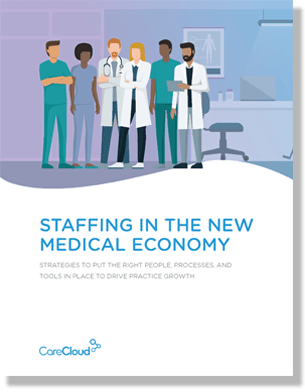HEALTHCARE EFFECTIVENESS DATA AND INFORMATION SET (HEDIS)
INTRODUCTION
Most health plans measure their quality and performance with the Healthcare Effectiveness Data and Information Set (HEDIS), one of the most widely used healthcare performance measurement tools. HEDIS provides consumers with measurement standards to compare health plan performance to help select their optimal healthcare coverage.
In addition to guiding client choices, HEDIS serves as a benchmark for carriers to assess their care delivery and align it with industry standards. By figuring out gaps in care and highlighting possibilities for improvement, HEDIS contributes to improved patient experiences, reduced expenses, and a better healthcare structures. With the ever-growing attention on fee-based care, understanding and optimizing HEDIS measures is essential for attaining better health outcomes and fostering trust among healthcare workers and patients.
DEFINITION & OBJECTIVES
HEDIS consists of quality measures created by the National Committee for Quality Assurance (NCQA). This data is tracked yearly to measure health plan performance and provides valuable information about the patient populations served. The measures track the care received, not just what was ordered. The data collected serves various purposes which include:
- Monitor the population health
- Evaluating treatment outcomes and procedures
- Providing an external performance measurement
The number of HEDIS measures changes yearly as new measures are added and outdated measures are retired. The measures encompass various aspects of healthcare, including preventative care, such as screenings and immunizations, management of physical and mental health conditions, access and availability of care, patient experience, healthcare utilization, and resource use.
HEDIS MY 2024 Updates:
NCQA Confirmed Updates for the HEDIS Measurement Year (MY) 2024
The National Committee for Quality Assurance (NCQA) recently confirmed several proposed changes for the HEDIS measurement Year (MY) 2024, following public comment earlier this year. These updates, described in the HEDIS Measurement Year 2024 Part 2: Technical Specifications for Health Systems released in August, bring changes to three key areas that affect health systems in various ways.
Consolidation and Simplification of Measures
NCQA’s focus on electronic clinical data access has streamlined many features. Follow-up care for children with ADHD medication (ADD) and antipsychotics like Metabolic Monitoring for Children and Adolescents (APM) will transition to the ECDS standard, while eye exams for diabetic patients (EED) will remain hybrid for MY 2024. Four options, including Ambulatory Care (AMB) and Non-Recommended Cervical Cancer Screening in Adolescent Females (NCS), will be eliminated.
Changes in Reporting Guidelines and Value Sets
The general guidelines have been revised, and the “Required Exclusions” description of resources now includes hospice and bereavement guidelines. NCQA has also simplified the value units, abolished the pension-based value units, and consolidated others. Significantly, ICD-9 diagnosis and procedure codes will be removed from the value sets for MY 2025. Additionally, clarity requirements have been revised, standards simplified, and specific research prioritized.
Inclusion and Diversity Policy
NCQA is expanding gender-specific measures to reach out transgender members. The breast cancer screening (BCS-E) and cervical cancer screening (CCS, CCS-E) pathways were expanded to include members with other gender identities than man or women and additional exclusions were introduced. Additionally, new methods of reporting racial and ethnic stratification (RES) have been added to promote health equity.
Consistency and Specificity in Measurement
NCQA continues efforts to ensure consistency and specificity in measures and changes to terminology and measurement systems. Notable changes include the use of “days” instead of “months” or “years” in the measurement language and the addition of detailed requirements to the specification. Also, new accounting information has been introduced, while requirements for certain elements revised for consistency and clarity.
This update underscores NCQA’s commitment to advancing healthcare quality measurement and ensuring that it is aligned with industry standards and evolving priorities. As health systems explore and understand these changes, it is important to remain informed and adapt strategies to meet HEDIS reporting requirements better and improve overall quality of care.
BENEFITS OF HEDIS
The scores on measures can assist healthcare plans in understanding the quality of care provided to their members in the most common chronic and acute illness populations. Other benefits of HEDIS include:
- Identifying gaps in healthcare network performance and the provision of care
- Improving patient outcomes and reducing costs through preventative care
- Providing beneficial data on public health issues affecting large patient populations, such as cancer, heart disease, smoking, asthma, and diabetes
- Monitoring the success of quality improvement initiatives
HEDIS DATA COLLECTION
HEDIS data is collected from three sources, primarily derived from billing claims, and analyzed to reflect the clinical care provided to plan members.
Although billing claims are the major source for data collection, specific measures may allow plans to survey members or access medical records for data that are not readily available in claims. The goal is to encourage providers to submit claims with accurate coding that captures all the necessary data by HEDIS through administrative efforts to decrease or eliminate the need for a hybrid review. The three sources for data collection include:
- Administrative – Measures claims for hospitalizations, medical office visits, procedures, and pharmacy data
- Hybrid – If additional data is necessary to provide a better overall picture of the care and services provided, then administrative data obtained from claims is combined with the member’s medical record information
- Patient Survey—This survey focuses on the patient’s experience with the provider. Patient provides data through a survey conducted by the Consumer Assessment of Healthcare Providers and Systems (CAHPS), which gains input about the patient’s satisfaction with their healthcare delivery.
HEDIS AND HEALTHCARE PROVIDERS
To remain competitive, achieving higher HEDIS scores helps encourage more consumers to choose a specific health plan. HEDIS measures have certain documentation requirements and specific standards contributing to the score. These scores are improved by providing timely and appropriate patient care with clear, accurate documentation in the claim codes of all the healthcare services offered.
Most providers choose healthcare to serve their patients, not specific standards. However, a lack of awareness and not instituting efforts to meet quality and preventative care requirements can negatively impact HEDIS scores. As HEDIS rates increase, the provider may earn additional revenue through pay-for-performance models.
IMPROVING HEDIS SCORES
Provider can improve their HEDIS score by:
- Understanding measurement requirements.
- Focusing on preventative screening.
- Responding timely to requests for medical records for review.
- Adhering to specified timelines.
- Ensuring claims are coded accurately.
- Identify care gaps of patients before their arrival to address them during the visit.
- Providing clear discharge instructions and scheduling the next appointment before the patient leaves to rule out non-compliance.
- Educating and collaborating with the patient on goals for their care.
COMPARING QUALITY
As healthcare continues to move toward more value-based care, the focus remains on the quality of healthcare delivered and working toward better patient outcomes. HEDIS allows consumers to compare health plans to ensure that the one they choose meets their healthcare needs.
Conclusion
HEDIS plays a pivotal role in shaping the future of healthcare by creating measurable requirements for quality care and performance. For healthcare carriers, it’s a tool to recognize care gaps, strive for improvements and foster trust with patients. As the world shifts toward value-based care, using HEDIS updates and insights can provide better results for patients and doctors alike. By prioritizing quality and transparency, the healthcare industry takes a step toward delivering care that truly makes a difference.




